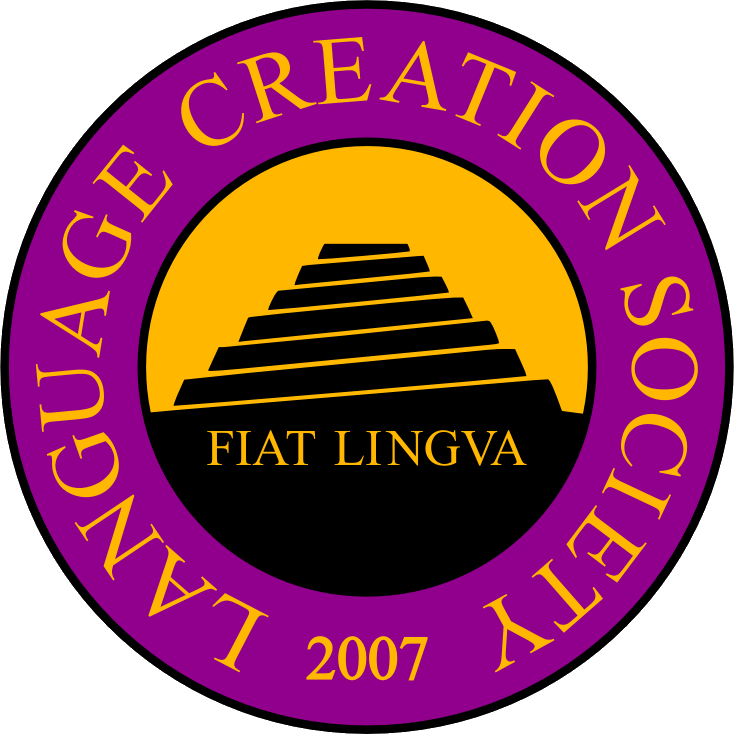LCC8 Speakers & Presenters
The list of speakers and presenters along with their abstracts can be found below, while the conference schedule can be found here. Maps of the city of Cambridge and of the Anglia Ruskin University campus there can be found here. LCC8 presentations will be happening in the university’s Science Centre (SCI).
| Margaret Ransdell–Green & Eric B. Barker  |
Songs in Conlangs of AeniithMargaret and Eric will be performing a few short music pieces that we have composed and arranged in several of Margaret’s conlangs, including but not limited to: Rílin, Gotevian, and Tosi. All of these conlangs are those centered in her constructed world setting, Aeniith (see: aeniith.com). A small handout of printed lyrics in each of the languages will be provided to attendees, featuring translations and interlinear glosses as well as some brief cultural notes. |
|
Margaret Ransdell–Green is a PhD student studying language documentation at the University of Hawai‘i at Mānoa in Honolulu. She lived in Alaska for most of her life before moving to the tropics in 2014. She has been conlanging since she was eight years old and world-building almost as long. Today, 8+ of her personal conlangs coexist in the world setting of Aeniith [ˈaeniːθ]. Ransdell-Green loves experimenting with different grammatical features in my conlangs and connecting language to culture and world setting. Her other interests include archery, metalsmithing, gaming, calligraphy, writing, singing, hiking, and traveling. Eric B. Barker is a Honolulu-based composer, keyboardist, and sound designer with a degree in electronic music from Oberlin Music Conservatory. Originally from Fairbanks, Alaska, he has a life-long interest in acoustics and musical systems of the world. As as performer, he has played and recorded with bands and ensembles from Jazz to Celtic, Classical to Heavy Metal. He enjoys cycling, gaming, hiking, cooking, and playing with his kitty. By day, Eric works as an ambient sound producer to help people sleep; by night, he keeps people awake playing rock and roll in Waikiki. |
|
Seumas Dòmhnallach |
Towards a “Practical” Application of ConlangingAs a minority language heritage speaker in a country where the policy of “benign neglect” has been so malignant that many people in areas where that language was once spoken don’t believe that that language was ever part of their heritage, Seumas Dòmhnallach often comes across the problem of how to communicate the value of this cultural heritage outside immediate “practical” uses. “Gaelic was never spoken here” is a lie oft repeated. And as an enthusiast of language creation, Dòmhnallach often finds themself interacting with people out in the world for whom “practical” issues almost never enter consideration at all when it comes to their own relationship with languages and cultures that are not only not their own, but do not have a place in the real world. Dòmhnallach is intrigued by what motivates people towards investment in fictional cultures and languages, and whether this enthusiasm can be harnessed in some way. Is the medium through which people discover conlangs important to their dedication? Could this approach be taken with real world languages, fantasy and science fiction brought to the world by minority language speakers. Should this approach be taken? Would it do more harm than good? Or are the conlang enthusiasts already the exact same people who would be learning minority languages anyway? In this talk Dòmhnallach hopes to discuss these questions, and maybe even answer some of them, while exploring this cheerful topic. |
| Seumas Dòmhnallach studied sociolinguistics and Scottish Gaelic at the University of Aberdeen with a strong focus on minority language issues, and is currently taking a break from living languages to do Indo-European historical linguistics at Leiden University. Seumas has been working on a constructed world with its own languages for more than half their life, which might one day see the light of day, and has even done some conlanging work for a fledgling sci-fi project for a friend. Seumas also answers to “Red Wizard” due to having a fondness for a particular hat, and an enthusiasm for a particular colour. |
|
Dr. Oliver Mayeux |
The Language Hoax:How a constructed language fooled linguists (for a while, anyway)In 1879, a French teenager was rifling through his grandfather’s library when, on one dusty shelf, he found an anonymous, handwritten manuscript. As he leafed through the fragile pages, Jean Parisot discovered that these were notes on the extinct language of the Taensa people, of the former French colony of Louisiana. After three years of painstaking work, Parisot published his analysis of this long-lost language. Linguists praised Parisot for his diligent, precocious scholarship and the contribution his discovery made to the nascent field of linguistics. At least, that is Parisot’s side of the story. It was not long until linguists raised their suspicions. The grammar appeared remarkably unlike anything ever recorded amongst the Indigenous languages of North America. When questioned, Parisot would not produce the original manuscript he claimed to have found. Instead, he cloistered himself in a rural seminary, withdrawing from scholars’ heated back-and-forths on the veracity of his Grammaire (1882). This presentation tells the story of Parisot’s ‘language hoax’. Oliver Mayeux will provide, for the first time in English, a sketch of the phonology, grammar and lexis of Parisot’s constructed language (here called Yillok , the conlang’s word for ‘language’) based on Mayeux’s ongoing translation and adaptation of Parisot’s work. Mayeux will describe, with reference to public and private correspondence between scholars, the reaction to Parisot’s Yillok and how it was, eventually, exposed as fraudulent. Parisot’s conlang caper is perhaps the first documented academic hoax in linguistics, and any conlanger will identify with his sense of mischief, creativity and linguistic attention-to-detail. |
| Dr. Oliver Mayeux has been conlanging since childhood and is a long-time lurker on various conlang mailing lists and IRC channels. These bad influences eventually led Mayeux to study linguistics, and he recently completed a PhD examining language contact and change in Louisiana Creole at the University of Cambridge. Mayeux is a conference assistant at LCC8, so please come to him with any questions or concerns you might have. | |
Dr. Bettina Beinhoff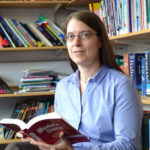 |
Panel: Conlangs in Popular FictionModerator: Dr. Bettina Beinhoff Panelists:
|
|
Dr. Bettina Beinhoff is a Senior Lecturer at Anglia Ruskin University in Cambridge. She is the director of the Anglia Ruskin Research Centre for Intercultural and Multilingual Studies and a member of the Centre for Science Fiction and Fantasy. Bettina has a long-standing research interest in conlangs. She is currently working on a project that investigates how conlangs are perceived across cultures. Dr. Dimitra Fimi is a Lecturer in Fantasy and Children’s Literature at the University of Glasgow. She co-edited the first critical “extended” edition of J.R.R. Tolkien’s essay “A Secret Vice”, in which Tolkien theorizes his language invention (A Secret Vice: Tolkien on Invented Languages, HarperCollins, 2016). Margaret Ransdell–Green is a PhD student studying language documentation at the University of Hawai‘i at Mānoa in Honolulu. She lived in Alaska for most of her life before moving to the tropics in 2014. She has been conlanging since she was eight years old and world-building almost as long. Today, 8+ of her personal conlangs coexist in the world setting of Aeniith [ˈaeniːθ]. Ransdell-Green loves experimenting with different grammatical features in my conlangs and connecting language to culture and world setting. Her other interests include archery, metalsmithing, gaming, calligraphy, writing, singing, hiking, and traveling. Dr. Tiffani Angus is a Senior Lecturer in Publishing and the Course Leader of MA Creative Writing at Anglia Ruskin University, and the new general director of the Centre for Science Fiction and Fantasy. Her debut novel, an historical fantasy about a “haunted” garden, will be published in autumn 2019, and her current research is on women’s bodies in apocalyptic fiction. Jackson “Jack” Bradley is an artist and MFA student at Columbia College Chicago with a BA in Visual and Media Arts from Université Laval. He is fluent in Klingon and has translated a number of short stories and even Voltaire’s 1759 satire, Candide. In 2019, he completed a book of original Klingon-language poetry entitled ngab. Inspired by Esperanto Youtubers, he has initiated his own Klingon-language Youtube channel titled jatlhDeSDu’. His linguistically-based art explores the intimacy of grammatical structures, the poetry of unfamiliar glyphs, and the indicible. His languages, though works in and of themselves, are often presented through external text-based works, performance pieces, and sound art. In May of 2019, he received the Prix Avatar and the Prix Folie-Culture. He is also pursuing a parallel career in language construction for popular media. Sarah Annes Brown is a Professor of English Literature at Anglia Ruskin University, and co-director of the Centre for Science Fiction and Fantasy. She has published widely on the reception of classical texts, in particular Ovid’s Metamorphoses, and is currently researching the influence of Shakespeare on science fiction. |
|
Sascha M. Baer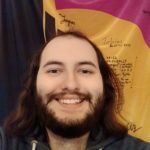 |
Ka Du Hanasu?Collaborative conpidginsIn this talk Sascha M. Baer will be presenting the idea of a collaborative pidgin conlang – a conlang created not by consciously deciding on grammar rules and vocabulary, but rather by creating an environment in which it can naturally come into existence simply by people talking with each other in the language. Sascha will be focusing on his own experience of creating Viossa, which was created over the duration of many video calls, in which he and friends initially all spoke mutually unintelligible languages, learning and teaching words to each other, and gradually developing the structure of a full-fledged language, which by the end they all could speak rather proficiently. While Sascha will showcase the language itself as well, the focus of the talk will be on the process of its creation. He will also compare Viossa to a few similar projects, both ones he participated in and ones he did not. In the end he would like to give some advice to people wishing to replicate a similar experiment. |
| Sascha M. Baer is a mathematics student at ETH Zürich, Switzerland. Despite his noticable lack of a linguistics degree, he is still quite familiar with the subject, particularly as it relates to conlanging. Under the pseudonym Adarain, he is active in multiple online conlanging communities and even moderates two of the more active ones: /r/conlangs on reddit, and the associated discord server. His primary conlanging interests are a priori artlangs and collaborative projects. | |
Nadezda Kologreeva |
Linguistic experiment with 3 artificial languagesPolish-Lithuanian Commonwealth’s alternative historyA poster presentationNadezda Kologreeva proposes and describes the naturally developed language of the inhabitants of the Polish-Lithuanian Commonwealth that would have been spoken by 2300 if the union hadn’t disappear in 1795. Řečpospoļićiškas laguage is an artificial language created by Kologreeva. Its name refers to Řečpospoļita state. Řečpospoļićiškas language originates from Lithuanian and Polish languages. Its dialect, influenced by Latvian language, would have developed in the north-eastern region of the Commonwealth. Some scholars treat it as an independent language. Its original name is Litwisks. The subdialect influenced by Libian language would have developed in the eastern region of the Commonwealth. It’s an unique Ugrian language in this Balto-slavic group. Its name is Litwő. Being Balto-Slavic languages Řečpospoļićiškas, Litwisks and Litwő belong to the Balto-Slavic branch of the Indo-European family of languages. The languages are a posteriori and esthetic language invented to some extent to set up an experiment, as shown in this fascinating poster presentation. |
| Nadezda Kologreeva‘s bio will be posted soon. | |
Tobias Lindorfer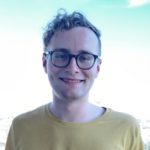 |
Conlanging, from Bible texts to subway stationsIntroducing the language temnšechhA poster presentationTobias Lindorfer has been creating the constructed language temnšech for more than two years, and he is excited to share how his conlang works and the ideas behind it all. temnšech has a sophisticated morphological system, which forms stems and words out of radical roots that can mutate following certain rules. The vocabulary, which is independent from any natural language, contains some original ideas and experiments with new concepts. The morphological alignments of temnšech are organized ergatively. Together with a large number of adjectives and prepositions, its eleven cases create a language that is able to express the relations between the nouns very precisely. The verbal system plays a less important role and is characterised by complex agglutinate verbs that can express a lot of information in one word. temnšech is not just a theoretical project: Lindorfer has been translating Bible texts, Whatsapp conversations and the names of subway stations to test its functionality. He will present some of the results and insights he gained. |
| Tobias Lindorfer is a student of German philology and art history in Vienna, Austria. He has created his own worlds since he was a child and has been drawing countless maps of countries and cities – mainly contemporary-like ones. When starting to write a fantasy novel he is still working on, he got into conlanging. What started as a few words and simple grammatical structures is now, three years later, a complex conlang in an elaborated world and a passion for linguistics. Aside from that, he enjoys travelling through Central Europe by train and bike visiting medieval castles and Late Gothic churches – so, there are enough reasons why he is particularly curious to participate in the LCC8 in Cambridge. | |
Yoshi Smart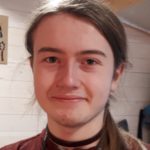 |
Lyrical and Technical Hyrbrid EvolutionOld Norse and Late Proto-FinnicA poster presentationYoshi Smart will present his conlang, Kjellfjöðis, and its utility in an academic light. Smart has been developing this conlang for a year and is currently using it in his Extended Project Qualification A-Level (‘EPQ’) as an example for the title: “The validity & practical usage of constructed languages in science & art”. Smart explores how conlangs can be devised and used as academic tools to research linguistics, and Kjellfjöðis has been devised to explore laws arising from merging unrelated languages (i.e: different families) – the parent languages being Old Norse and Late Proto-Finnic. Smart will describe Kjellfjöðis, the scientific method he used to devise the conlang, and the difficulties he faced. Smart will also describe how he combined Late Proto-Finnic and Old Norse to achieve a robust phonology, and how this is a plausible evolution of a hybrid language. He then constructed a grammatical system which expresses the cultural merging of both languages and peoples, aiming to develop idioms and further consolidate its conculture. Additionally, Smart will demonstrate applications of Kjellfjöðis in the form of artpieces, which present the runic system as a visual, lyrial and technical set of stylistic choices conveying the world of Kjellfjöðis. One concept within Kjellfjöðis is that if a conlang is to be used in scientific or cultural applications, as a tool or demonstrational device, it should have visual and acoustic interest or appeal, as well as technical and historic validity. The presentation may help others consider uses of hybrid conlangs. |
| Yoshi Smart (alias Yoshimidsu) is a Sixth-Form student in Oxfordshire who has studied French, German and Latin. He developed an interest in linguistics while studying Latin three years ago and has been thoroughly invested ever since, especially in phonology and sound shifts. One early conlang of his, Kikka, investigated a spoken language for insectoid beings who spoke with varying types of clicks and click lengths, conveying meaning as we do with words. His most developed conlang Ëtëlfinnsk – formerly Kjellfjöðis – explores language merging between two unrelated language families (IE and Uralic) to explore an alternative history and hypotheses on sound changes, new grammar and cultural references. Music, visual art and poems have been composed in tandem with Ëtëlfinnsk. Yoshi’s fascination with Dark-Ages & Medieval Europe and ancient history has driven his focus on historical accuracy and recording languages in order to preserve cultures and their diversity in the world. | |
Margaret Ransdell-Green & Eric B. Barker |
Constructed Musical Systems and Instruments of AeniithA poster presentationA look at the creation of music for con-cultures. This focuses on three cultures from the Aeniith world by Margaret Ransdell-Green and explores constructing theoretical musical systems, notation, instruments, and styles. This session serves as a more in-depth analysis of the music performed earlier by Margaret & Eric Barker. |
|
Margaret Ransdell–Green is a PhD student studying language documentation at the University of Hawai‘i at Mānoa in Honolulu. She lived in Alaska for most of her life before moving to the tropics in 2014. She has been conlanging since she was eight years old and world-building almost as long. Today, 8+ of her personal conlangs coexist in the world setting of Aeniith [ˈaeniːθ]. Ransdell-Green loves experimenting with different grammatical features in my conlangs and connecting language to culture and world setting. Her other interests include archery, metalsmithing, gaming, calligraphy, writing, singing, hiking, and traveling. Eric B. Barker is a Honolulu-based composer, keyboardist, and sound designer with a degree in electronic music from Oberlin Music Conservatory. Originally from Fairbanks, Alaska, he has a life-long interest in acoustics and musical systems of the world. As as performer, he has played and recorded with bands and ensembles from Jazz to Celtic, Classical to Heavy Metal. He enjoys cycling, gaming, hiking, cooking, and playing with his kitty. By day, Eric works as an ambient sound producer to help people sleep; by night, he keeps people awake playing rock and roll in Waikiki. |
|
Sea Chapman |
Artlangs and Fiction: Thoughts from a Book EditorA poster presentationBook editor Sea Chapman’s presentation will cover the typical fiction writing, editing, and publication processes faced by modern authors, as well as the unique challenges that conlangers deal with as they seek to publish a work featuring their artlang, conworld, and conculture. Her suggestions on how to best handle any obstacles or challenges in getting artlang-inspired writing out there will help any conlanger aspiring to be a published fiction author, too. |
|
Sea Chapman has been working as an editor since 2006. From book manuscripts and audio transcripts to press releases and ELL programs, she has worked on a little bit of everything. Sea has specialized in editing creative writing for the last six years; she offers developmental editing, line editing, and copyediting (copy-editing) services for fiction and nonfiction. For fiction, Sea edits book-length thriller, mystery, historical fiction, and speculative fiction (science fiction and fantasy) manuscripts. She edits graphic novels, visual novel and narrative game scripts, and comics (web or print) sometimes, too. For nonfiction, Sea edits essays and articles about anthropology, archaeology, and history; constructed languages (conlangs); death and grieving across cultures; international humanities and art history; and travel. She has recently started pursuing technical writing and editing opportunities, too. Sea regularly contributes to writing and editing communities as a juror for writing grants and contests and as a presenter or speaker at writers and editors conferences held internationally. Her academic studies and research were primarily focused on death communications such as grief disclosure, privacy management, expectancy violations, and interaction adaptation in the Arizona State University communications sciences program. She considers herself to be a “baby conlanger” with a special interest in signed conlangs, conlangs in fiction, and conlanging as a tool for reviving dead or dying languages. She currently serves as the Language Creation Society webmaster. She lives in central Arizona, USA. |
|
Jackson Bradley |
Developing a Literary Corpus for the Warrior’s TongueA poster presentationKlingon has many translated works. Just look on Amazon and you’ll find a Klingon Hamlet, Klingon Much Ado About Nothing, a Klingon Tao Te Ching, and others. Many more can be found online. However, there are very few original works written in Klingon. Not content with the current state of affairs, Jackson Bradley set pen to paper and composed a large number of Haikus, along with accompanying Free Verse Poetry. In this presentation, Jack, or rather DeSDu’, will talk about how his experience, his deep, personal connection to the Klingon language, and how the idea for his book of original Klingon-language poetry came about. He will also discuss the current state of the Klingon-language literary corpus as well as that of the language itself. In addition, he will be doing a live reading of some of his poetry. DeSDu’ will be also focusing on his habits when composing poetry, the problems he encountered during his work on the project, his takeaways, and the problems that still lie ahead of the Klingon-speaking community. tlhIngan HolvaD ghItlh law’ lumughlu’ta’. AmazonDaq yInej neH ‘ej tlhIngan Hol Hamlet, tlhIngan Hol paghmo’ tIn mIS, tlhIngan Hol pIn’a’ qan paQDI’norgh, latlh je Datu’bej. weQmoQnaQDaq latlh ghItlh law’ lutu’lu’ je. ‘ach ghItlh qonmeH tlhIngan Hol lulo’ta’ nuv puSqu’. DeSDu’ belHa’moHqu’mo’ ghu’vam, ghItlhwI’ woH ghaH ‘ej ghuQHom law’, bIH tlhejbogh ghuQ tlhab’e’ je qonta’. muchvamvaD ta’Daj, tlhIngan Hol SaHchu’meH meqDaj je, tlhIngan Hol ghuQ paq mung je rIch DeSDu’. ‘ej tlhIngan Hol ghItlh, tlhIngan Hol Dotlh je rIch. vabDot jeSwI’vaD ghuQDaj puS laD je. ghuQ qonmeH Ho’DoSDaj, jInmol Seng DIghta’bogh je, Doch chu’ ghojpu’bogh je, Seng’e’ bamtaHbogh tlhIngan Hol nugh je rIch. |
| Jackson Bradley is an artist and MFA student at Columbia College Chicago with a BA in Visual and Media Arts from Université Laval. He is fluent in Klingon and has translated a number of short stories and even Voltaire’s 1759 satire, Candide. In 2019, he completed a book of original Klingon-language poetry entitled ngab. Inspired by Esperanto Youtubers, he has initiated his own Klingon-language Youtube channel titled jatlhDeSDu’. His linguistically-based art explores the intimacy of grammatical structures, the poetry of unfamiliar glyphs, and the indicible. His languages, though works in and of themselves, are often presented through external text-based works, performance pieces, and sound art. In May of 2019, he received the Prix Avatar and the Prix Folie-Culture. He is also pursuing a parallel career in language construction for popular media. | |
Javier Barrio |
Featurality in Brightmoonese: When Phonemes Melt Down and Features Run FreeA poster presentationJust like the concept of syllable seems to break down and become intractable when dealing with the phonology of a language like Bella Coola, the concept of phoneme becomes a tricky, prickly problem when tackling the featural morphophonology of Brightmoonese, where the sounds of consonants and vowels are so intricately intertwined that one cannot seem to exist without the other and only features appear to have a non-entangled, fully-defined independent existence for the morphology to deal with. |
| Javier Barrio is a software engineer hailing from northern Spain and currently living in Barcelona, with additional background in architecture and art history, and with an endless fascination for anything language-related since childhood. Fluent in several languages, and knowledgeable in many others (such as Basque, a lifelong source of inspiration). He voraciously reads any reference on the most varied linguistics topics he can lay his physical or virtual hands on-from diachronic phonetics to lexical semantics, from grammatology to grammaticalization. Started conlanging as a child, but could not get his only sister to share in his unusual passion. Participated for a while in online discussions through the Usenet and the CONLANG mailing list during the early-to-mid Noughties, and since 2012 has been working on-and-off on a fanfic conlanging project set in the context of the Motuverse (the rich, but conlinguistically-starved, Masters of the Universe fictional universe), including the likes of Brightmoonese and Twiggetan, and scripts like Trollanic and Old Garrish. His other personal interests include board game design, science and math topics (such as color theory, astronomy, geometry, and numeral systems), action-figure collecting, and learning about foreign places and cultures. | |
Harper McCarley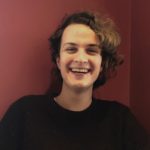 |
Tsiilareit, a Beginner’s LanguageIn this presentation Harper McCarley would like to present their conlang tsiilareit which they have been working on for roughly two years. McCarley will be focusing on how they have built it into a constructed world with created a constructed culture and race of speakers. To build the conworld McCarley has been using science to determine the flora and fauna of the area the language is spoken and then using this to determine the types of natural terms the language would have. They have also used the geography of the conworld to determine the types of interactions and what people groups the conculture of their language would have interacted with. This allowed them to determine likely borrowed vocabulary, such as naaru a term for cactus which isn’t a native plant in the homeland of my concluture. McCarley will also be talking about how being LGBT+ affect the culture of the people and how this went on to affect the language as well as how idioms they’ve created have actually help them in some ways deal with negative emotions surround being LGBT+. |
| Harper McCarley is an avid book reader and film watcher, currently studying English Language & Linguistics at Anglia Ruskin Uni but hailing from Basingstoke originally. Their love of fantasy paired with their love for writing stories and learning languages lead them to creating languages. Conlanging for McCarley is really a way to learn and create something that they think is special and unique to them and since they enjoy learning every step is fun. They think their love of fantasy and languages stems from their fascination with the experience of other and how something so strange to one person can be completely normal for someone with a slightly different planet. McCarley hopes that through their talk they can shed at least a little light on their unique experience with conlanging from a LGBTQ+ perspective. | |
Kelvin Jackson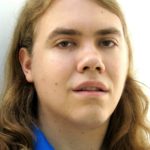 |
Grammaticalizing Consonant Gradation the Uralic WayMany Uralic languages display consonant gradation conditioned on the phonological |
| Kelvin Jackson is a linguist and programmer currently based in Turku, Finland, while working on a Master’s degree in Finno-Ugric linguistics. They have been conlanging for almost exactly half their life. They look forward to their first real LCC. |
|
| Dr. Gary Taylor-Raebel |
The Benefits of Proto-ConlangsA common desire amongst conlangers wishing to create a priori conlangs is to produce a language which feels natural. Designing a phonology and syntax often has the undesired effect of unnaturalness; the phonotactics may not flow as desired, irregularities planted in the lexicon may seem a little too random, though too much regularity can also feel unnatural, and dialect creation is often based on a standard form, as opposed to both the standard and dialect sharing a common ancestor. Dr. Gary Taylor-Raebel’s presentation will introduce some of the benefits of creating a proto-conlang on which to base one’s main conlang, thus creating two conlangs simultaneously. The proto-conlang can contain the designed phonotactics but lacks irregularities, which as described leads to unnaturalness, but by introducing simple sound changes a naturalness arises. Through sound changes it is also possible to create irregularities in the language which may subsequently be ‘regularised’ through analogy. Analogous changes will also add a layer of depth to a conlang. An example could be where two verbs /ˈhendo/ and /kuˈto/ each regularly form their past tenses by moving the stress to the first syllable with reduplication of the final syllable (/ˈhendodo/ and /ˈkutoto/). Introduction of vowel reduction in unstressed vowels, post-stress voicing and stressed vowel lengthening in open syllables produces the verbs [ˈhendə] with the past tense [ˈhendədə], but [kəˈto:] and [ˈku:dətə] and we have our first tentative irregular verb. Analogical changes could regularise some forms but keep others irregular. The presentation will also cover inter-dialectal borrowing. |
|
Dr. Gary Taylor-Raebel is a Londoner who loves languages (obviously) and travel. He is also an amateur genealogist. In his academic career he has studied Maths and German as an undergraduate and Linguistics to PhD level. For his thesis he looked at historical vocalisations in Germanic languages where former consonants turn into vowels. Taylor-Raebel is currently working as a teaching fellow at Newcastle University where he teaches phonology and morphology. He has been fascinated by languages since his childhood (since at least 8 years old when his older sister started learning French and he would steal her textbook). His first venture into conlanging was with inventing alphabets and from there he dabbled in constructing rudimentary languages (mainly heavily based on languages he already knew). Taylor-Raebel loves learning languages but never gets very far with them (apart from German) as he finds there are too many other languages he also wants to learn, which means he has a basic understanding of, and can read basic texts in, lots of them without being able to speak them but he feels this has helped with constructing his own grammars. Taylor-Raebel had a longish period where he maintained the interest in languages but let his creative side slip and it was only about 7 or 8 years ago where he picked up a sketch of a language he had created during his teens and decided to develop it further into his main language Mila. Taylor-Raebel dabbles in constructing other languages but always feels like he is betraying Mila by doing so. Thanks for reading and ɔʌ́ʌ:ʌ-ω:ɷnι:ʌ |
|
Dr. Joseph W. Windsor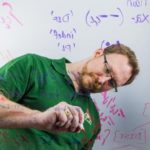 |
What’s [Theory] Got to Do, Got to Do with It?Language is a system; whether your conlang is designed for humanoids, alien species, or others, it should have some degree of systematicity—not to be confused with the human-centric idea of Universal Grammar (cf. Chomsky 1965). In this presentation, Joseph W. Windsor briefly outlines two linguistic theories that can be adapted to handle both human and non-human grammars, ideal for systematic organization of conlang phonological and morphosyntactic components. The Contrastive Hierarchy (Dresher 2009) of phonological features can be used to create balanced phonological systems with internal consistency. Using a bit of clever ingenuity, Windsor will show how this theory can also be adapted for non-human sounds. The Universal Spine Hypothesis (Wiltschko 2014) for morphosyntactic structure is a theory used to model the wide variety of possible distinctions made by natural languages (e.g., Direct/Inverse [Blackfoot] vs. Realis/Irrealis [Upper Austrian German]). Such features cannot be modeled by a theory of grammar unless that theory allows for meaningful distinctions to be created by combining universal categories (κ) and language-specific units-of-language (UoL). By understanding what are claimed to be the necessary components of language, the conlanger is free to create natural feeling UoLs that are not constrained by evidenced natural languages. Windsor aims to present advanced linguistic theories in a way that someone with very little prior linguistic training can use to guide them in conlang creation to preserve a natural language feel without being constrained by natural languages. |
| Dr. Joseph (Joey) W. Windsor is President of the LCS and was the local host of LCC7 in Calgary, Canada. He holds a PhD in Linguistics, specializing in the syntax-phonology interface. As a conlanger, he enjoys manipulating theoretical frameworks to see what the logical results would be and making conlangs to feature in his Dungeons & Dragons games—both as puzzles for the players to solve and just to add flavour and verisimilitude to the story. |
|
Kevin Graaf |
A Demiurge of NamesPlato’s Cratylus, Word Formation, and Iconicity inContemporary Linguistics and Constructed LanguagesPlato’s dialogue Cratylus is chiefly concerned with the “correctness” of names, that is, a normative account of the relationship between the signi er and the signi ed. In fact, Socrates and his interlocutors are preoccupied primarily with whether the words we use to refer to the everyday objects of discourse are proper to their referrent, or merely arbitrary and decided upon by convention. In his treatment of the topic, Plato presents three different theories of names and their genealogy: that they are conventional, intrinsic, or finally of supernatural origin. Indeed, I argue that Plato’s conception of lexical and/or phonological proprietry essentially pre figures the notion of iconicity in modern linguistics. In this talk, Kevin Graaf sketches the general landscape of major contemporary theories of lexicogenesis, iconicity, and the nature of names, both in linguistics and philosophy of language, and furthermore discuss how they vindicate or discredit Plato. Moreover, Graaf presents several extant methods of word formation in constructed languages, beyond the traditional a priori/a posteriori distinction, and explore a few notable exemplars thereof, and how these align with or differ from accounts of word formation in natural language. Finally, Graaf considers how these theories of iconicity and word formation, both Platonic and contemporary, might be employed so that we may become better craftsmen of names, or δημῖουργοί ὀνομάτων. |
| Kevin Graaf is a software developer, specializing in verification and formal methods. Kevin has been constructing languages ever since the idea first occurred to him during a particularly long power outage when he was 14. His main conlang, Dunsish, is a hybrid, with properties of both engineered and artistic languages, and is the product of over 8 years of development. In addition to linguistics, Kevin also has an active interest in scholastic philosophy, music theory, and logic, among other things. | |
Margaret Ransdell–Green |
Creative PolysemyLooking from Culture to Language and Back AgainIn this presentation Margaret N. Ransdell-Green shows how she uses creative polysemy to assign multiple meanings to words, informed by constructed cultures built in tandem with conlangs. Some kinds of polysemy (coexistence of meanings in one word) are more ‘universally’ understandable—the semantic trajectory from one meaning to another over time is relatively easy to interpret. But some polysemy is less obvious outside the context of culture. This presentation looks at how Ransdell-Green has used constructed cultures and worldbuilding to inform polysemy in her conlangs, and how this can offer a greater richness and depth in conlanging. By the same token, creative polysemy can help develop unique elements of constructed cultures. |
| Margaret Ransdell–Green is a PhD student studying language documentation at the University of Hawai‘i at Mānoa in Honolulu. She lived in Alaska for most of her life before moving to the tropics in 2014. She has been conlanging since she was eight years old and world-building almost as long. Today, 8+ of her personal conlangs coexist in the world setting of Aeniith [ˈaeniːθ]. Ransdell-Green loves experimenting with different grammatical features in my conlangs and connecting language to culture and world setting. Her other interests include archery, metalsmithing, gaming, calligraphy, writing, singing, hiking, and traveling. | |
Jeffrey Brown |
Conculture Elaboration Enhances Artlang NaturalismThis 15-minute “lightning talk” explains how you can enhance the semantic naturalism of your artistic conlang, by extending and pruning your conlang’s lexicon and modifying its grammar, in parallel with the development and embellishment of your conculture. |
| Jeffrey Brown created his first language at the age of 21 and was surprised, upon the birth of the Internet, to discover that there were others who did this. He has lived most of his life in Minnesota, but now calls San Diego home. He has created Temenia, Sim-Arabic, Ma’alahi, and Beltös. Brown speaks English, Spanish, French, German, Arabic, and Hawaiian, with varying degrees of incompetency. Currently, he is the Treasurer of the Language Creation Society. | |
Dr. Jim Baker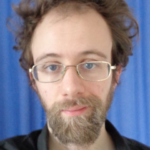 |
Adapting a Construction Language for a NovelAn ExperienceCreating a language to be used in a work of fiction has its own special challenges, such as accessibility for readers and consideration of aesthetic effects. In this talk Dr. Jim Baker will discuss his recent experience of adapting his oldest constructed language, Viksen, for his novel The Man in the Blackened House. The language appears in the novel principally in the names of people and places. Dr. Baker will talk about have had to carefully respell names to get the gist of the pronunciation across in a clear manner. He will also discuss using English-based nicknames for some characters (such as “Daggers” and “Madam Crocodile”) to prevent readers from becoming too bogged down in a slew of unfamiliar words. Another challenge is representing terms for concepts like titles, days of the week and units of currency. Dr. Baker considers for example the choices he has made to represent Viksen’s complex class- and age-based system of honorifics in terms of familiar English terms (like “Lord”, “miss”), trying to capture something of both the senses and different distinctions of the Viksen forms. He has also had to think about the ways of representing different characters’ speech: about how different Viksen dialects and sociolects can be best captured in dialogue presented in English. To finish the talk Dr. Baker will also discuss how writing the novel has positively impacted his work on the language itself, by forcing me to think in detail about previously under-considered areas of the surrounding culture such as religion and the justice system, and the terminology associated with these. |
| Dr. Jim Baker has been creating worlds and languages since a very young age. He studied linguistics at undergraduate, master’s and doctoral level at the University of Cambridge, where he has been teaching for the past two years. He is primarily known to the online language creation community by the monniker “Curlyjimsam”. | |
| Dr. Alison Long |
Ui Qoma Pulls an Ataturk and Switched to Roman Script, Not Bastardized GeorgianCreating a Language for The City and the CityWhen the BBC commissioned Mammoth Productions to adapt China Mieville’s The City and the City for television, the writer and producers decided that, in order to heighten the differences between the two cities in the story, they would use a conlang. The starting point was Mieville’s novel, but otherwise there was complete freedom. Illitan has influences from the Slavonic languages (it is implied in the novel that the two cities are somewhere in south-east Europe), Sanskrit and Arabic (as noted in the novel). While the novel has some direction regarding the Ul Qoman language of Illitan, along with a few items of vocabulary, the differences between written and dramatic forms meant a number of adjustments had to be made (much to the annoyance of some Mieville fans). Although the original brief encompassed 33 lines of dialogue and some song lyrics, it grew to include road signs, brand names, background dialogue and even menus. All had to conform to the rules of the Illitan language in order to help create the world of the twin cities on screen. This talk explores the issues in creating a language for a television adaptation of an established source, including the needs of the designers and actors, and creating a language that could exist in our own, contemporary, world. |
| Dr. Alison Long is a Teaching Fellow at Keele University, UK, and specialises in Slavic languages, language policy and language change. She created the Illitan language for the BBC’s adaptation of China Mieville’s The City and The City, broadcast last year. Alison is relatively new to the world of conlangs, but very much enjoying delving deeper into the area. | |
Jan Havliš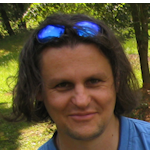 |
Arching Over Natural and Created Languages, orThe Xmetov Shall Live with Esperanto,the Dutch Shall Lie Down with the Ygyde,the Quenya Shall Breathe with the NioticAlthough the idea seems intuitively acceptable, are created languages the same stuff as natural languages? Let us take a look beyond the hypothesis that language creation is a natural cognitive process by proposing that there is a particular unifying cognitive ground for created and natural languages. And that it roots in what the language function is. Considering natural languages to span from pidgins to full literary ones, the created languages may be represented by pseudo-languages like zaum in poetry or Emerald Tablet language by Wilhelm Ch. Kriegsmann, through naming and moot languages of Michal Ajvaz, conceptual creations of John Wilkins and John Quijada, up to temples of quasi-natural languages like Sindarin or Itlani. Jan Havliš will present an analysis of potential common features from the linguistic point of view regarding the function of the above-mentioned entities and establish those shared by both, natural languages and these created. Havliš would also try to illustrate what such an approach may contribute to both, academic linguistics and living language creation. And, maybe a magician will show up. |
| Jan Havliš was born 1970 in Brno, Czechoslovakia, and nowadays lives with his wife, two cats, and more than 3500 books in a small house in Nebovidy, Czech Republic. He is a reader (senior lecturer) in bioanalytics and proteomics at Masaryk University in Brno. He was unknowingly conlanging since 7, and seriously conlanging from 1995, when he joined his friend Radek Zahradnik and they co-operated on development of Arkian, their first collaborating conlang. In 2010 – 2013 he made his BSc in general linguistics, since 2014 he teaches language construction & interlinguistics for Faculty of Art at Masaryk University. Since 2017 he started his PhD in general linguistics at Faculty of Art of the same uni with topic language creativity. | |
Jan van Steenbergen |
Constructed Languages in the 21st CenturyLast November, Jan van Steenbergen had the pleasure and honour to represent the Language Creation Society during the Linguapax/Faber Residency and Conference in Catalonia, and hope to present the fruits of his research at LCC8. The Digital Age has not only caused an exponential growth of the number of known conlangs, they have also become more diverse than ever before. It can be said without hesitation that we have entered the Third Era in the History of Language Invention, which – unlike its two predecessors – is not dominated by the promise of universal truth or world peace, but by imagination and enjoyment. Conlangs play a prominent role in popular culture nowadays, and the modern, globalised world opens new perspectives for auxiliary languages as well. This emancipation of constructed languages has led to broader social and academic acceptation, but also poses new problems. Van Steenbergen hopes to discuss conlang classification and a new classification scheme proposal; the dangers of fragmentation caused by social media; what makes a language popular; and much, much more. |
| Jan van Steenbergen studied East European Studies at the University of Amsterdam and has been a professional Polish translator and interpreter since 1997. His fascination with foreign languages dates back to his early childhood, and in the 1980s he made his first conlang sketches. He is the author of several conlangs, including Hattic (1996), Wenedyk (2002) and Vozgian (1996, revised in 2003), as well as orthography projects like Poilschi (2005) and Polish Cyrillic (2008). All these projects revolve somehow around the Polish language or the Slavic languages as a whole. In 2006, he got involved in the Slovianski Project and become the author of a naturalistic version of the language, Slovianski-N, which is now known as Slovianski. Apart from languages, his main interests are history, writing, music composition and Indian cinema. Furthermore, van Steenbergen has been a member of Ill Bethisad since 2002, where he is responsible for the Republic of the Two Crowns and Russia. He is married and has three children. | |
